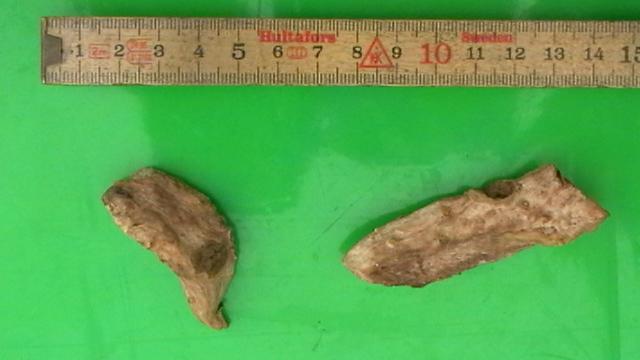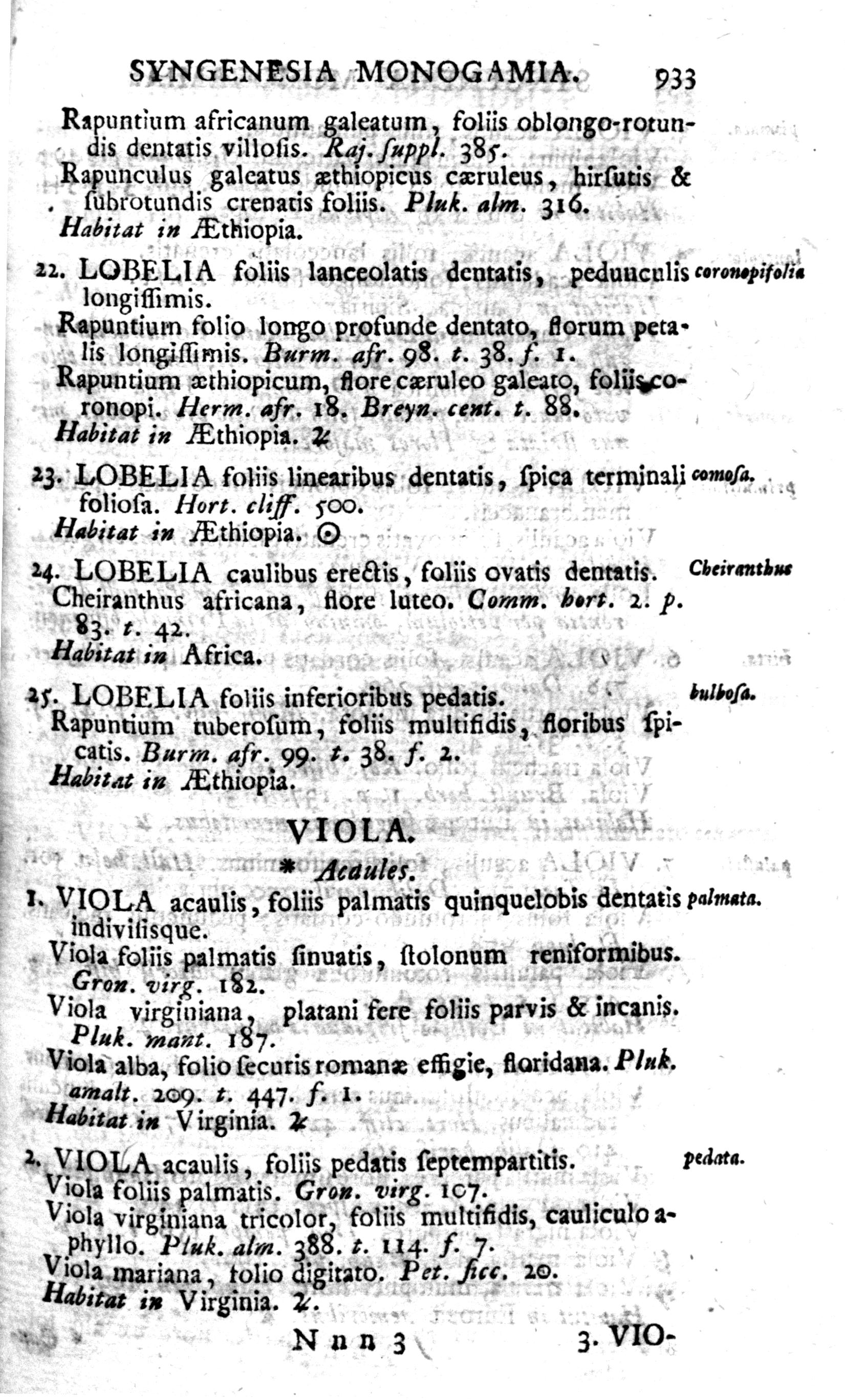|
Orris Root
Orris root (''rhizoma iridis'') is the root of '' Iris germanica'' and ''Iris pallida''. It had the common name of Queen Elizabeth Root. Constituent chemicals The most valued component of orris root is oil of orris (0.1–0.2%), a yellow-white mass containing myristic acid. Oil of orris is sometimes sold as orris butter. Other components include fat, resin, starch, mucilage, bitter extractive, and a glucoside called iridin or irisin. Uses Once important in western herbal medicine, it is now used mainly as a fixative and base note in perfumery; it is the most widely used fixative for potpourri. Orris is also an ingredient in many brands of gin,T. K. Lim including Bombay Sapphire. Fabienne Pavia, in her book ''L'univers des Parfums'' (1995, ed. Solar), states that in the manufacturing of perfumes using orris, the scent of the iris root differs from that of the flower. After preparation the scent is reminiscent of the smell of violets. In Japan, the roots and leave ... [...More Info...] [...Related Items...] OR: [Wikipedia] [Google] [Baidu] |
Bombay Sapphire
Bombay Sapphire is a brand of gin that is distilled by the Bombay Spirits Company, a subsidiary company of Bacardi, at Laverstoke Mill in the village of Laverstoke in the English county of Hampshire. The brand was first launched in 1986 by English wine-merchant IDV. In 1997 Diageo sold the brand to Bacardi. Its name originates from the gin and tonic popularised by the Royal Indian Armed Forces during the British Raj, "Sapphire" refers to the violet-blue Star of Bombay which was mined from British Ceylon (Sri Lanka), and is now on display at the Smithsonian Institution. Bombay Sapphire is marketed in a flat-sided, sapphire-coloured bottle that bears a picture of Queen Victoria on the label. The flavouring of the drink comes from a recipe of ten ingredients: almond, lemon peel, liquorice, juniper berries, orris root, angelica, coriander, cassia, cubeb, and grains of paradise. Alcohol brought in from another supplier is evaporated three times using a carterhead still, ... [...More Info...] [...Related Items...] OR: [Wikipedia] [Google] [Baidu] |
Nonpareils
Nonpareils are a decorative confectionery of tiny balls made with sugar and starch, traditionally an opaque white but now available in many colors. They are also known as hundreds and thousands in South Africa, Australia, New Zealand and the United Kingdom. Their origin is uncertain, but they may have evolved out of the pharmaceutical use of sugar, as they were a miniature version of comfits. The French name has been interpreted to mean they were "without equal" for intricate decoration of cakes, desserts, and other sweets, and for the elaborate pièces montées constructed as table ornaments. The term ''nonpareil'' also may refer to a specific confection, made using nonpareils – namely, discs of chocolate coated with nonpareils, which also are known as chocolate nonpareils. History An 18th-century American recipe for a frosted wedding cake calls for nonpareils as decoration. By the early 19th century, colored nonpareils seem to have been available in the U.S. The popular c ... [...More Info...] [...Related Items...] OR: [Wikipedia] [Google] [Baidu] |
Raspberry
The raspberry is the edible fruit of a multitude of plant species in the genus ''Rubus'' of the rose family, most of which are in the subgenus '' Idaeobatus''. The name also applies to these plants themselves. Raspberries are perennial with woody stems. World production of raspberries in 2020 was 895,771 tonnes, led by Russia with 20% of the total. Description A raspberry is an aggregate fruit, developing from the numerous distinct carpels of a single flower. What distinguishes the raspberry from its blackberry relatives is whether or not the torus ( receptacle or stem) "picks with" (i.e., stays with) the fruit. When picking a blackberry fruit, the torus stays with the fruit. With a raspberry, the torus remains on the plant, leaving a hollow core in the raspberry fruit. Raspberries are grown for the fresh fruit market and for commercial processing into individually quick frozen (IQF) fruit, purée, juice, or as dried fruit used in a variety of grocery products such as ras ... [...More Info...] [...Related Items...] OR: [Wikipedia] [Google] [Baidu] |
Syrup
In cooking, a syrup (less commonly sirup; from ar, شراب; , beverage, wine and la, sirupus) is a condiment that is a thick, viscous liquid consisting primarily of a solution of sugar in water, containing a large amount of dissolved sugars but showing little tendency to deposit crystals. Its consistency is similar to that of molasses. The viscosity arises from the multiple hydrogen bonds between the dissolved sugar, which has many hydroxyl (OH) groups. Culinary syrup There are a range of syrups used in food production, including: * Agave syrup, made from agave stem * Cane syrup, made from sugar canes * Chocolate syrup * Corn syrup * Glucose syrup * Golden syrup, a by-product of refining crystallized sugar * High fructose corn syrup, widely used in the US * Maple syrup Common syrups A variety of beverages call for sweetening to offset the tartness of some juices used in the drink recipes. Granulated sugar does not dissolve easily in cold drinks or ethyl alcohol. Sin ... [...More Info...] [...Related Items...] OR: [Wikipedia] [Google] [Baidu] |
Tincture
A tincture is typically an extract of plant or animal material dissolved in ethanol (ethyl alcohol). Solvent concentrations of 25–60% are common, but may run as high as 90%.Groot Handboek Geneeskrachtige Planten by Geert Verhelst In chemistry, a tincture is a solution that has ethanol as its solvent. In herbal medicine, alcoholic tinctures are made with various ethanol concentrations, which should be at least 20% alcohol for preservation purposes. Other solvents for producing tinctures include vinegar, glycerol (also called glycerine), diethyl ether and propylene glycol, not all of which can be used for internal consumption. Ethanol has the advantage of being an excellent solvent for both acidic and basic (alkaline) constituents. A tincture using glycerine is called a glycerite. Glycerine is generally a poorer solvent than ethanol. Vinegar, being acidic, is a better solvent for obtaining alkaloids but a poorer solvent for acidic components. For individuals who choose not t ... [...More Info...] [...Related Items...] OR: [Wikipedia] [Google] [Baidu] |
Moroccan Cuisine
Moroccan cuisine () is the cuisine of Morocco, fueled by interactions and exchanges with many cultures and nations over the centuries. Moroccan cuisine is usually a mix of Arab, Berber, Andalusi, and Mediterranean cuisines, with minimal European (French and Spanish) and sub-Saharan influences. Like the rest of the Maghrebi cuisine, Moroccan cuisine has more in common with Middle Eastern cuisine than with the rest of Africa. According to Moroccan chef and cuisine researcher Hossin Houari, the oldest traces of Moroccan cuisine that can still be observed today, go back to the 7th century BC. Ingredients Morocco produces a large range of Mediterranean fruits and vegetables, as well as tropical products like snails. Common meats include beef, goat, mutton and lamb, which, together with chicken and seafood, serve as a base for the cuisine. Characteristic flavorings include lemon pickle, argan oil, preserved butter (smen), olive oil, and dried fruits. The staple grains today ar ... [...More Info...] [...Related Items...] OR: [Wikipedia] [Google] [Baidu] |
Ras El Hanout
''Ras el hanout'' or ''rass el hanout'' ( ar, رأس الحانوت , ) is a spice mix found in varying forms in Tunisia, Algeria, and Morocco. The name in Arabic means "head of the shop" and implies a mixture of the best spices the seller has to offer. at (retrieved 3 August 2016) Ras el hanout is used in many savoury dishes, sometimes rubbed on meat or fish, or stirred into couscous, or . No definitive composition of spice ... [...More Info...] [...Related Items...] OR: [Wikipedia] [Google] [Baidu] |
Iris Nigricans
''Iris nigricans'' is a flowering plant in the family Iridaceae. It is the national flower of Jordan. The flowers are blackish-purple and in diameter, and the plants are tall with recurved leaves. It needs direct sun and sharp drainage. It is endemic to Jordan and is an endangered species. There are 8 other irises native to Jordan, and most of these are also endangered. The black species are sometimes confused with ''Iris nigricans''. *''Iris vartanii'' - Vartanii Iris - light blue flowers - extinct in Jordan *''Iris atrofusca'' - Jil'ad Iris - black flowers - endangered *''Iris atropurpurea'' - Purple Iris - black flowers - cultivated but vulnerable in the wild *'' Iris petrana'' - Petra Iris - black flowers *''Iris germanica Iris most often refers to: *Iris (anatomy), part of the eye *Iris (mythology), a Greek goddess * ''Iris'' (plant), a genus of flowering plants * Iris (color), an ambiguous color term Iris or IRIS may also refer to: Arts and media Fictional ent ... ... [...More Info...] [...Related Items...] OR: [Wikipedia] [Google] [Baidu] |
Viola (plant)
''Viola'' is a genus of flowering plants in the violet family Violaceae. It is the largest genus in the family, containing between 525 and 600 species. Most species are found in the temperate Northern Hemisphere; however, some are also found in widely divergent areas such as Hawaii, Australasia, and the Andes. Some ''Viola'' species are perennial plants, some are annual plants, and a few are small shrubs. Many species, varieties and cultivars are grown in gardens for their ornamental flowers. In horticulture the term pansy is normally used for those multi-colored, large-flowered cultivars which are raised annually or biennially from seed and used extensively in bedding. The terms viola and violet are normally reserved for small-flowered annuals or perennials, including the wild species. Description Annual or perennial caulescent or acaulescent (with or without a visible plant stem above the ground) herbs, shrubs or very rarely treelets. In acaulescent taxa the foliage and flowe ... [...More Info...] [...Related Items...] OR: [Wikipedia] [Google] [Baidu] |
Japan
Japan ( ja, 日本, or , and formally , ''Nihonkoku'') is an island country in East Asia. It is situated in the northwest Pacific Ocean, and is bordered on the west by the Sea of Japan, while extending from the Sea of Okhotsk in the north toward the East China Sea, Philippine Sea, and Taiwan in the south. Japan is a part of the Ring of Fire, and spans an archipelago of 6852 islands covering ; the five main islands are Hokkaido, Honshu (the "mainland"), Shikoku, Kyushu, and Okinawa. Tokyo is the nation's capital and largest city, followed by Yokohama, Osaka, Nagoya, Sapporo, Fukuoka, Kobe, and Kyoto. Japan is the eleventh most populous country in the world, as well as one of the most densely populated and urbanized. About three-fourths of the country's terrain is mountainous, concentrating its population of 123.2 million on narrow coastal plains. Japan is divided into 47 administrative prefectures and eight traditional regions. The Greater Tokyo ... [...More Info...] [...Related Items...] OR: [Wikipedia] [Google] [Baidu] |
Violet (plant)
''Viola'' is a genus of flowering plants in the violet family Violaceae. It is the largest genus in the family, containing between 525 and 600 species. Most species are found in the temperate Northern Hemisphere; however, some are also found in widely divergent areas such as Hawaii, Australasia, and the Andes. Some ''Viola'' species are perennial plants, some are annual plants, and a few are small shrubs. Many species, varieties and cultivars are grown in gardens for their ornamental flowers. In horticulture the term pansy is normally used for those multi-colored, large-flowered cultivars which are raised annually or biennially from seed and used extensively in bedding. The terms viola and violet are normally reserved for small-flowered annuals or perennials, including the wild species. Description Annual or perennial caulescent or acaulescent (with or without a visible plant stem above the ground) herbs, shrubs or very rarely treelets. In acaulescent taxa the foliage and flowe ... [...More Info...] [...Related Items...] OR: [Wikipedia] [Google] [Baidu] |



.jpg)
.jpg)


